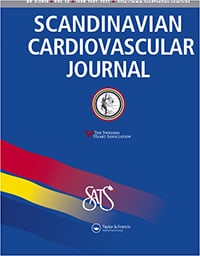Diagnostic accuracy of troponin T measured ≥6h after symptom onset for ruling out myocardial infarction

Objectives
Guidelines recommend a single high-sensitivity cardiac troponin T (hs-cTnT) ≤14 ng/L measured ≥6 h after chest pain onset combined with a GRACE score <140 and the patient being pain-free for ruling out myocardial infarction (MI). There is however little data on the performance of this strategy. We therefore aimed to evaluate the diagnostic accuracy of a hs-cTnT ≤14 ng/L measured ≥6 h after chest pain onset when combined with GRACE score or other clinical risk stratification tools.Design
This was a secondary analysis of a prospective observational study, which enrolled emergency department (ED) chest pain patients. The hs-cTnT strategy was combined with HEART, TIMI, EDACS, GRACE score and ED physician’s overall assessment of patient history and ECG. The primary outcome was MI, and the secondary outcome was 30-day major adverse cardiac events (MACE).Results
All tested diagnostic strategies were shown to have a negative predictive value (NPV) ≥99.5% for ruling out MI. Using HEART, TIMI, EDACS or ECG + patient history also resulted in a NPV ≥98% for ruling out 30-day MACE. An isolated hs-cTnT ≤14 ng/L measured ≥6 h after chest pain onset and the combination with GRACE score both had a NPV <98% for ruling out 30-day MACE.Conclusion
A single hs-cTnT ≤14 ng/L obtained ≥6 h from chest pain onset, with and without GRACE score, reliably ruled out MI but did not perform well for ruling out 30-day MACE. These results question current guideline recommendations, and indicate that HEART, EDACS, TIMI, or ECG + patient history strategies should be the preferred risk stratification tools.
Ardavan Khoshnood, Marie Erlandsson, Nazim Isma, Troels Yndigegn, Arash Mokhtari
2020
Scandinavian Cardiovascular Journal, 54(3):153-161
